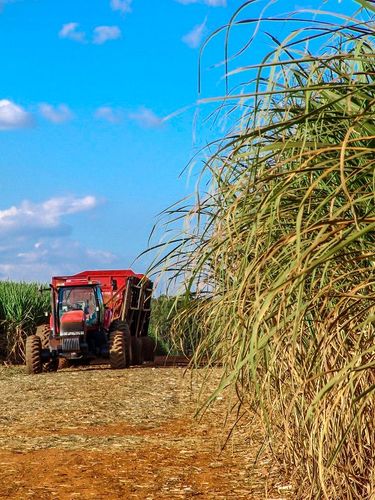UNICA: Sugarcane processing, ethanol production up in early August

August 29, 2023
BY Erin Voegele
Sugarcane processing in the south-central region of Brazil was up significantly during the first half of August, according to data released by UNICA, the Brazilian sugarcane industry association. Ethanol production and sales were also up during the two-week period.
Mills in the south-central region of Brazil processed 47.87 million tons of sugarcane during the first half of August, up 23.38 percent when compared to the same period of last year. Total sugarcane processing so far this harvest season, which began April 1, is at 360.05 million metric tons, up 11.65 percent when compared to the same period of 2022.
Advertisement
Mills in the region produced 2.35 billion liters (620.08 million gallons) of ethanol during the two-week period, up 16.43 percent. Production included 1.42 billion liters of hydrous ethanol, up 22.46 percent, and 921.63 million liters of anhydrous ethanol, up 8.19 percent. Corn ethanol accounted for 12 percent, or 282 million liters, of production, up 70.22 percent.
Total ethanol production since the start of the current harvest season has reached 16.79 billion liters, up 6.84 percent, including 9.76 billion liters of hydrous ethanol, up 0.73 percent, and 7.03 billion liters of anhydrous ethanol, up 16.66 percent. Corn ethanol accounted for 2.23 billion liters of production, up 49.74 percent when compared to the same period of last year.
Mills in the south-central region of Brazil sold 1.32 billion liters of ethanol during the first half of August, up 8.74 percent when compared to the same period of 2022. Sales included 833.25 million liters of hydrous ethanol, up 25.36 percent, and 486.02 million liters of anhydrous ethanol, down 11.4 percent.
Advertisement
Domestic sales included 752.38 million liters of hydrous ethanol, up 15 percent, and 477.41 million liters of anhydrous ethanol, down 3.86 percent.
Total ethanol sales since the beginning of the current harvest season reached 10.94 billion liters, up 1.76 percent. Sales include 6.12 billion liters of hydrous ethanol, down 4.83 percent, and 4.82 billion liters of anhydrous ethanol, up 11.58 percent.
Related Stories
Scientists at ORNL have developed a first-ever method of detecting ribonucleic acid, or RNA, inside plant cells using a technique that results in a visible fluorescent signal. The technology could help develop hardier bioenergy and food crops.
The 2025 International Fuel Ethanol Workshop & Expo, held in Omaha, Nebraska, concluded with record-breaking participation and industry engagement, reinforcing its role as the largest and most influential gathering in the global ethanol sector.
TotalEnergies and Quatra, the European market leader in the collection and recycling of used cooking oil, have signed a 15-year agreement beginning in 2026, for the supply of 60,000 tons a year of European used cooking oil.
The USDA maintained its forecast for 2025-’26 soybean oil use in biofuel production in its latest World Agricultural Supply and Demand Estimates report, released June 12. The estimate for 2024-’25 soybean use in biofuel production was revised down.
SkyNRG on June 5 released its fifth Sustainable Aviation Fuel Market Outlook. The report, developed in collaboration with ICF, highlights the need to scale up technologies and feedstocks that are an alternative to HEFA fuels.
Upcoming Events










